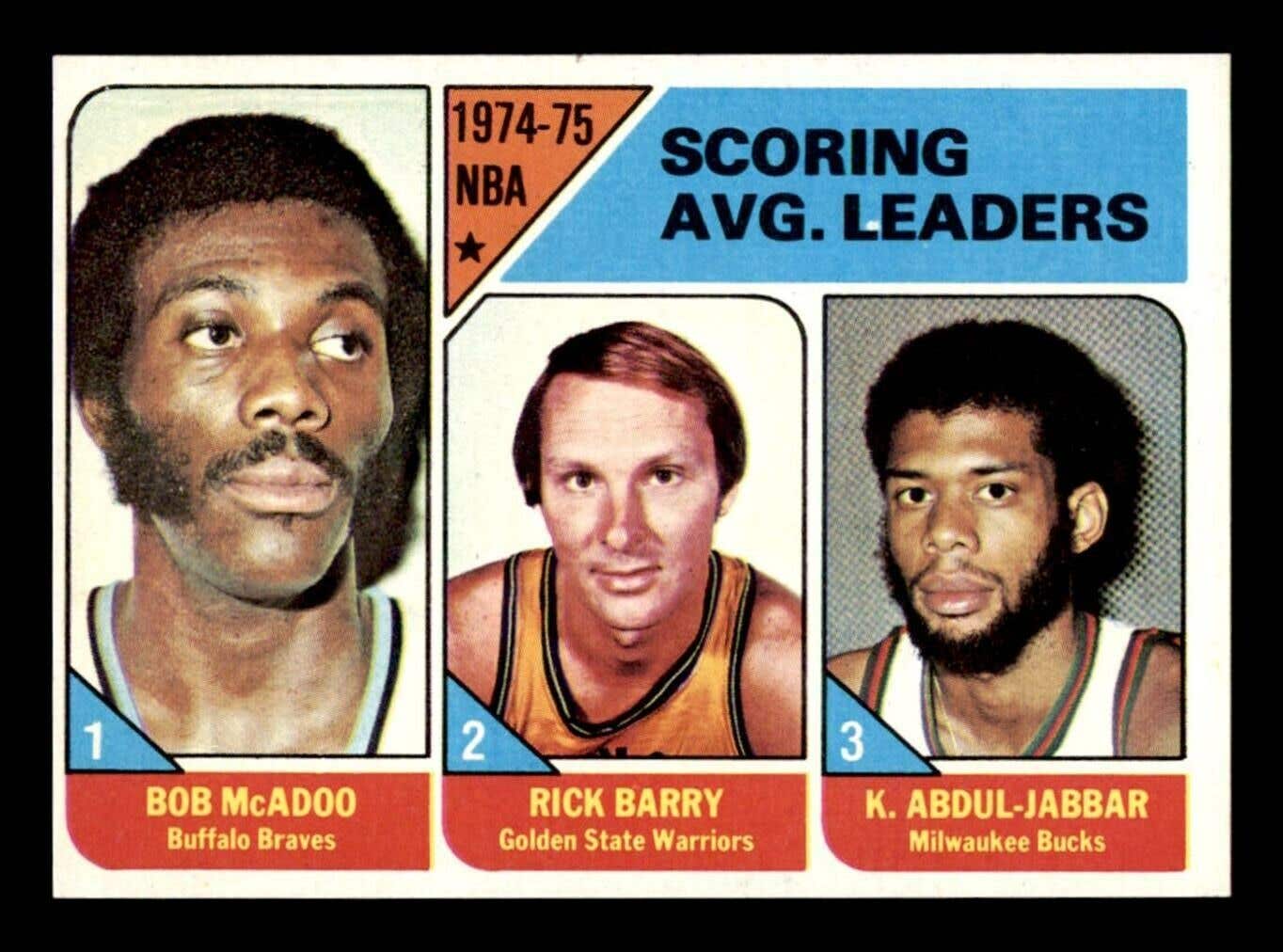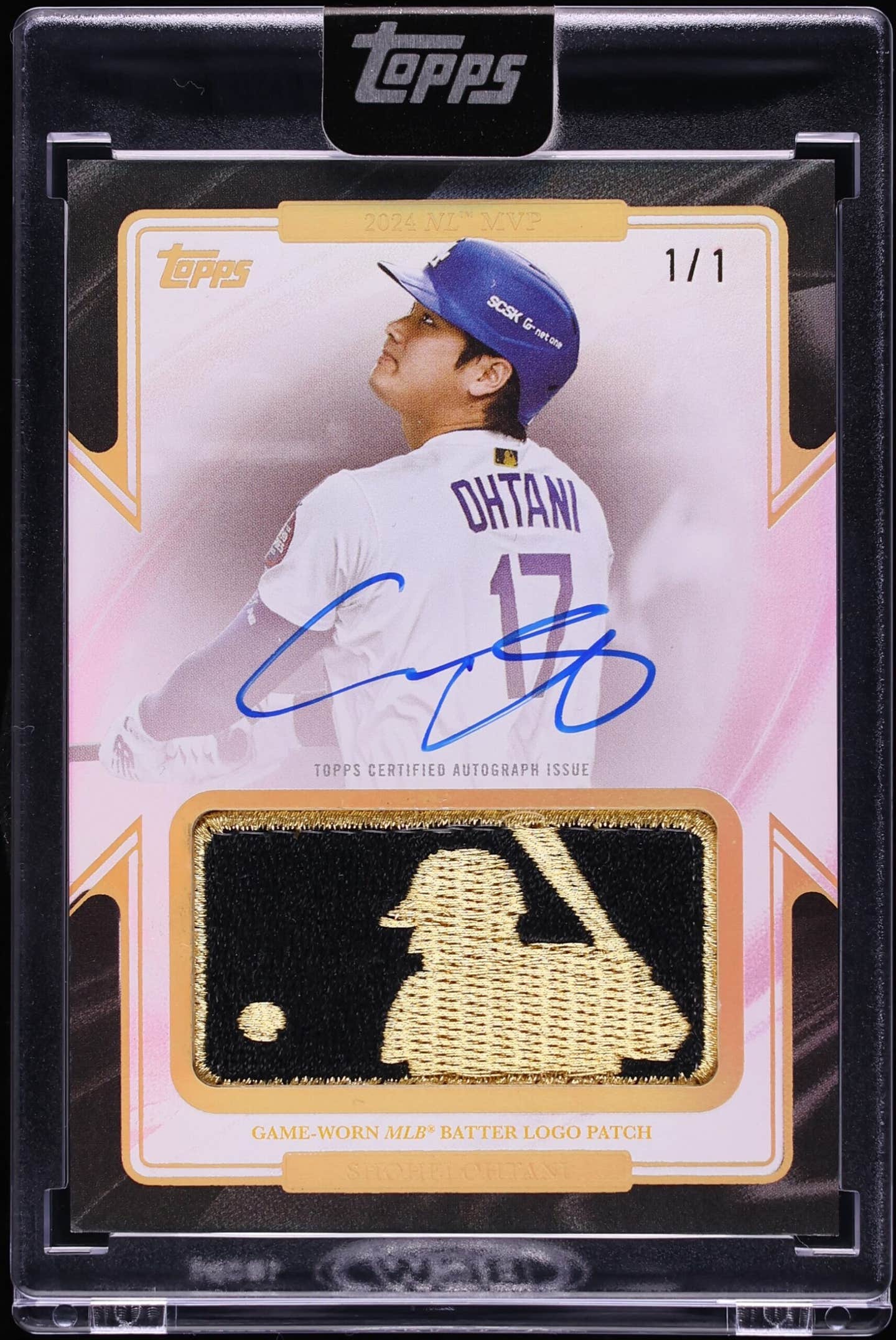
News
Historic 1975-76 Topps Basketball set filled with NBA legends, final cards of classic ABA
With great fanfare, Topps announced in 2021 that it was returning to the basketball arena, again issuing NBA cards after a hiatus of more than a decade.
Topps is commencing what might be called its fourth “generation” of hoops cards. The third generation lasted from 1992-2010 and included countless sets and cards, many of them high-tech and premium series with names such as Chrome, Platinum, Finest and Pristine. As to be expected from their names, all of them cost much more than the few cents that first- and second-generation packs went for. The cards were too numerous and expensive for the average collector and appealed mainly to speculators looking for the next hot rookie investment.
Of course, Topps’ first generation of basketball cards consisted of the single set of 80 cards issued in nickel packs for the 1957-58 season. The set is notable today for its high percentage of rookie cards, since it was the first national set of basketball cards since the Bowmans of 1948. The 80 cards include no less than 22 Hall of Famers with 20 being rookie cards. (Two of them, Andy Philip and Carl Braun, had appeared in the 1948 Bowman set).
The Hall of Fame rookies include such all-time greats as Bill Russell, Bob Cousy and Bob Pettit. Unfortunately, the 1957-58 set is otherwise unremarkable, with an unimaginative design, grainy photographs and fairly generic, low-tech backs.
It is the second generation of Topps basketball cards — those issued from 1969-1982 — that contain the most unusual and interesting cards in Topps’ 66 years and four generations of hoops history. It seems Topps was not sure what basketball cards should look like so they experimented with various formats.
The first two sets in 1969-70 and 1970-71 were the famous “Tall Boys,” oversize cards of standard width but a full 4-by-11/16 in height.
For the 1976-77 season, Topps did themselves even better with a set of 1976-77 postcard-size cards. Collectors found all three oversize sets attractive and they remain popular today.
Also unconventional but less successful was the 1980-81 Topps set of 176 cards with 264 different players found three to a card in various combinations and perforated for easy detachment. The set contains the rookie cards of both Magic Johnson and Larry Bird (on the same card, no less) and would certainly be more popular and valuable if issued in the standard format or even as Tall Boys. Solely because of its format the set has enjoyed only a moderate degree of popularity, although it seems to have made somewhat of a comeback in recent years. However, detached cards have always had only a minimal value.
Of the remaining second-generation basketball issues, the largest and most interesting is the historic and colorful 1975-76 set.
NBA LEGENDS IN 1975-76 TOPPS BASKETBALL
The set today is neither difficult to find nor expensive to acquire except superstar cards that have been slabbed and graded Gem Mint 10.
However, it is significant not just because of its size (330 cards) but because it contains the final cards of players from the American Basketball Association, which ceased operation after the conclusion of the 1975-76 NBA season.
As a result, it contains such NBA legends as Kareem Abdul-Jabbar, Bob McAdoo, Pete Maravich, Nate Archibald and Rick Barry, as well as ABA stars Julius Erving and Artis Gilmore.
Most cards from the 1975-76 set are very attractive, resembling to some extent the popular Topps baseball set of 1957. About half the players are presented in posed shots (seemingly in an arena hallway), while half are captured in game action. Unfortunately, in a few of the action shots the player is partially obscured by an opponent or teammate. Howard Porter (card #79) is even pictured sideways sliding on his butt.
Otherwise, each card front contains only the player's name in small white print at the card bottom, his team's name in large bright letters at the top, and two brightly colored diagonal stripes in the card's upper right corner.
Card backs are printed in dark shades of blue and green on gray cardboard and suffer from two defects. First, while the bottom of the back contains the standard career statistical summary, the rest of the player's personal information is limited by being contained in a circle surrounded by cartoons of generic hoopsters. After the usual personal statistics like height, weight and birth date, there is room (in most cases) for only two bullet highlights.
Most of these blurbs are minimal, such as “Has twice been NBA All-Star,” or “Scored 24 points in game twice 1972-73.”
Where space allows, the card also provides the means of the player's professional debut. For example, Fred Brown (#41) was “Drafted #1-1971 by Seattle,” while Don “Slick” Watts (#59) was “Signed as Free Agent: 1973 by Seattle.” Fortunately, this shortage of information was more than made up for with the extensive profiles found on the oversized beauties of 1976-77.
The set’s second problem has been driving collectors crazy since 1975. Each card's number is printed in dark blue in a tiny box of equally dark green. In some cases the card number is virtually unreadable. Perhaps it is these two drawbacks that have prevented the 1975-76 set from being considered among the finest of Topps' second-generation of basketball cards.
1975-76 TOPPS SET BREAKDOWN
The 1975-76 basketball set was issued in three series of 110 cards, each series seeming equally plentiful. The first two contain NBA players while the third is exclusively cards of the ABA, which was in its ninth and final season. Each of the three series has its own checklist located at different places in the series. Since the cards were printed on Topps' standard 132-card sheet, there are 66 double-printed cards in the set, 22 to be found in each of the three series.
With such a large number of cards, Topps was able to include several subsets. League Leader subsets are found at #1-6 for the NBA and #221-226 for the ABA. Team Leader cards are also found at #116-133 for NBA teams and #278-287 for the ABA, with teams appearing in alphabetical order by city.
In addition, team cards with checklist backs were issued separately from the Team Leaders. They are found at the end of the second and third series, #202-220 for the NBA and #321-330 for the ABA.
Two of them stand out from all others, which picture the usual group shot with coaches so familiar to collectors. Instead, on the Los Angeles Lakers card (#212) there are separate head shots of nine players (including Kareem Abdul-Jabbar and Pat Riley). And the Seattle Supersonics card (#219) shows the players on the ramp of a Boeing 747 jet, evidently a supersonic transport, with Coach Bill Russell on the ground serving as flight director.
There are also two subsets of two cards each covering the 1975 playoffs. Cards #188 and #189 detail the Golden State Warriors 1975 NBA championship while #309 and #310 describe the title run of the ABA Kentucky Colonels.
Unlike many sets of all sports, All-Stars are noted but not in a distinct subset. Instead, each standard player card is noted such as “NBA 1st Team All-Star” in a small box at the card's bottom. Strangely, there are not 20 All-Star cards to be expected of two leagues having two five-member teams each. For example, there are but four players designated as First Team All-NBA. They are Bob McAdoo (#10), Nate Archibald (#15), Walt Frazier (#55) and Rick Barry (#100).
Surprisingly for such a large set, the crop of rookie cards is limited. The most desirable and expensive rookie card is that of Hall of Famer Moses Malone (#254), shown as a skinny teenager rather than the muscular man who led the Philadelphia 76ers to the NBA title in 1983.
Another Hall of Fame rookie is Bobby Jones (#298), deemed “The Secretary of Defense” while a teammate of Malone and Julius Erving on the 1983 champions. Other prominent rookies are Tom Burleson (#24), Keith (Jamal) Wilkes (#50), Scott Wedman (#89), Truck Robinson (#151) and Campy Russell (#156).
One of the most significant and historic aspects of the set is the incredible number of players whose last card appears in 1975-76. It may not have the most final cards in the history of cardboard basketball — that distinction probably belongs to some one-off set such as the 1948 Bowmans or the 1961-62 Fleers — but there are literally dozens of players whose last contemporary card can be found here.
A big reason for this is the disappearance of six former ABA clubs. The 1974-75 ABA season concluded in the spring of 1975 with 10 teams in operation. When professional basketball commenced in September 1976, only four of those teams (the Nets, Spurs, Pacers and Nuggets) took the court as new members of the NBA, the ABA having disappeared except as a fond memory.
So besides the final cards of so many players, the set contains the last hobby record of six franchises. These six teams met their ends in various ways. Several excellent books detail the nine-year existence and ultimate demise of the ABA. My personal favorite is “Loose Balls” by Terry Pluto, published in 1990 but still readily available on the Internet.
Briefly, one of the six teams, the Memphis Sounds, finished their fifth season (all losing ones on the court and in the box office) in early 1975. The franchise was taken over by a group of investors in Maryland who moved the team to Baltimore and renamed them the Claws. The team played three exhibition games and then went out of business.
Two other ABA franchises, the San Diego Sails (formerly the Conquistadors) and the Utah Stars, began the 1975-76 season, played a handful of games, and then followed the Sounds/Claws into bankruptcy. A fourth team, the Virginia Squires, went through six coaches but managed to stay afloat for the entire season. They finished with a record of 15-68 and closed their doors upon season's end.
The final two teams, the Kentucky Colonels and the St. Louis Spirits, completed the 1975-76 season but were dissolved under the terms of the NBA-ABA truce, with some of their players being picked up by NBA teams in a dispersal draft. Thus, no fewer than six teams made their last hurrah in the 1975-76 set.
The ABA players who made their last cardboard appearance in the 1975-76 set were as notable as they were numerous, even if their names mean little or nothing to current basketball fans.
John Brisker (#49) is shown as a member of the Seattle Supersonics and his final card is today priced as a common. However, in his earlier days he was famed as “The Heavyweight Champion of the ABA” due to his propensity for fighting opponents, teammates and anyone else he disliked. He disappeared somewhere in Africa in 1978 when supposedly fighting as a mercenary for (or possibly against) dictator Idi Amin and was long ago declared legally dead.
James “Fly” Williams (#293) was a Brooklyn playground legend and excelled in college at Austin Peay. His professional career, however, consisted of just the 1974-75 ABA season and his only card can be found in this set.
Steve Jones (#232) is perhaps best remembered as longtime NBA announcer “Snapper” Jones but was a longtime star for seven different ABA teams.
One player not found in the set is Nets forward Wendell Ladner, one of the most colorful players in the history of the ABA, a league with no shortage of characters. Unfortunately, Ladner was killed in an airplane crash at JFK airport in the 1975 offseason. Topps could have included an “In Memoriam” card for him but did not, missing the chance to recognize one of the most beloved players in ABA history.
The set also contains the final contemporary cards of several other ABA legends, such as Byron Beck (#258), Rick Mount (#261), Freddie Lewis (#275), Mel Daniels (#292) and Red Robbins (#295).
Also, among the two series of NBA cards can be found the final card of Hall of Famer Nate Thurmond (#85) and the last player cards of longtime coaches Pat Riley (#71) and Mike D'Antoni (#176).
So the 1975-76 Topps set deserves to be remembered today for its historical importance even if not the most attractive or popular or collectible set among Topps' second generation of basketball cards.








